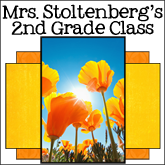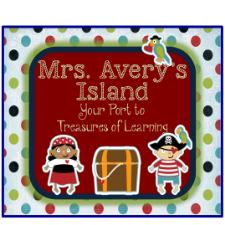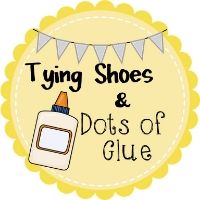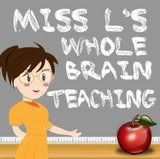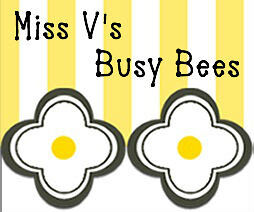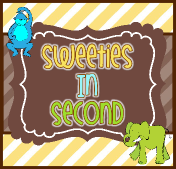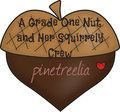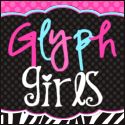Teaching children how to write is challenging, but writing orally and in print daily makes all the difference! When I introduced the WBT Writing methods, I found it made a huge change in my style of teaching and in the results of all my students, which included RSP and EL (English Learners)!
Here is the writing schedule I use in a 2nd grade classroom. Don’t hesitate to contact me with questions!! I have included lots of links in the orange highlighted terms! Click away!!
Aug-Sep They started the year with daily Genius Ladder sentence building on the first 2 rungs. Many of my students had to learn specifically what a noun and a verb are, and of course, what a sentence is. We honed in on the Power Pix for these 3 concepts right away, and revisit them often in the daily morning Power Pix Wall practice.
As they became more proficient with the Oral Writing of the sentence, we moved into the Extender Rung. It was very important to be introducing the Brainies along with this. 
When we got to the Extender, the Super Speed Grammar practice was a great support to understanding how to build more detailed sentences. Also, because they are 2nd graders, I had started the practice of having them write the Genius Sentence in a Journal they keep in their desk.
Sep-Oct I found as I moved up, I was continually reviewing the basics of the Blah/Spicy. This allowed me to set up a frame on the board for independent seat work. This was great for learners at all levels. It was also a great way for me to assess individual progress. They were, and still are, required to read their sentences back to themselves using gestures, including Brainy gestures, as they edit/add on to the sentence(s) they have created. (Red Green Proofreading is part of this also).
I moved into the Triple Whammy frame, and did a lot of Oral Writing practice. We started very simple, as shown in The Writing Game download. Again, the Brainies are big here. Just like the original Genius Ladder, the beginning Triple Whammy frame was rather blah/simple. These became more elaborate with practice. Coach's webcast #589 on this subject is excellent! They worked with a partner and created several Triple Whammy sentences from a list of topics. Using a Who, What, Why, Where, When question on a topic, students created an appropriate Triple Whammy response, thus creating a Topic Sentence.
Oct-Dec With the experience of creating lots of Triple Whammy topic sentences, it was an easy transition to move on to the Micro-essay. I used a color coded cue system on the board to help students get a format going. I leave this up on my board. I find my higher learners grasp the pattern fairly quickly and don't need the visual as much as the slower learners. Look at webcast #589 again. Here is how I set mine up. I indent my model on the board, and we use the Brainy, "New Paragraph" and gesture, when we start to read the paragraph. To help students avoid "getting stuck" with the problem of creating different sentence starters each time, I initially start with the ordinal transition words. Later, I will move them into choosing their own sentence starters.
______________________ ______________, ______________, and
_________________. First, __________________because_______________
_______. Second, _________________________ because _______________
__________________________. Finally, ________________________________
because ___________________________. In conclusion, __________ ___________,
_____________, and ______________________.
We use this pattern every day, initially as Oral Writing, and then as print together, and finally as independent seat work. Based on your students' progress, you will decide when to move to the next level.
The next step, was to put an Adder/Extender sentence with each of the color coded sentences. By then, they had had lots of experience with the Brainies. Now the cue system looked like this on the board (Note: each Adder is expected to be different within the paragraph):
______________________ ______________, ______________, and
_________________. First, __________________because_______________
_______. Adder Second, _________________________ because _______________
__________________________. Adder Finally, ________________________________
because ___________________________. Adder In conclusion, __________ ___________,
_____________, and ______________________.
Dec-June Now we move to the 5 paragraph essay! Now the cue system has changed to this:
______________________ ______________, ______________, and
_________________.
First, __________________because_______________
_______. Adder
Second, _________________________ because _______________
__________________________. Adder
Finally, ________________________________
because ___________________________. Adder
In conclusion, __________ ___________,
_____________, and ______________________.
When I first go to the multi-paragraph format, my students learned that each time the color changed, they had to "Drop and Shove! New Paragraph!" They literally would drop their body down a little and shove their hand across their body to emphasize the format change of the essay. They love the FUN of this!
We stick with this for a couple of weeks and then it changes. They are now expected to write a total of 3 sentences in each paragraph...2 Adders. Each Adder had to be different. They have a Brainy cue card on their desks to help them with variety.
______________________ ______________, ______________, and
_________________.
First, __________________because_______________
_______. Adder Adder
Second, _________________________ because _______________
__________________________. Adder Adder
Finally, ________________________________
because ___________________________. Adder Adder
In conclusion, __________ ___________,
_____________, and ______________________.
(This is also the format you will be using as you begin Competition Brainies in your class.)
One element is different for me. In my district, because we are using district writing guidelines, I had to change up the last paragraph. My paragraph does not restate the 3 Whammies, but is a statement of reflection about the topic instead. It looks like this:
In conclusion, I think _____________________________________________. I learned _________________________________________________________.
In my classroom, there is a question on the board every morning for them to respond to. When I tell them the question (which is based on a story, science, social studies, whatever is current in your lesson plans) I say it, then say Mirror Words, and they do it with me. I then have them turn to their partner in a Teach Okay set and talk about some possible answers to the question. I use Uh, oh Switch! to give both partners a chance to orally participate in this discussion. (By doing this, students have a chance to get some ideas to help get their writing started...especially important for slower learners!) I call them back with Class! The next step is to ask them to decide what the Target words are in the question that they will need to use in their Triple Whammy topic sentence. They just call out the main vocabulary words, and I underline them with a blue line. For example:
How does your family celebrate Thanksgiving? I would underline family, celebrate, and Thanksgiving. They would be expected to write something similar to: My family celebrates Thanksgiving by ______, _________, and ___________. They would then proceed with the 5 paragraph essay format shown above. They are reminded that when they finish, they are to reread with gestures (Brainies included) and edit as needed.
What is really great about this basic format, you can adapt it to any writing assignment! They become very fluid in their writing, and you can easily move into more complex sentences. Electronic SuperSpeed Grammar is used at least twice a week(more often at the beginning of the year).
Hope this helps get you started on Day One, which will be here soon! Watch for some writing samples to show you the difference WBT Writing can make with your students!!




